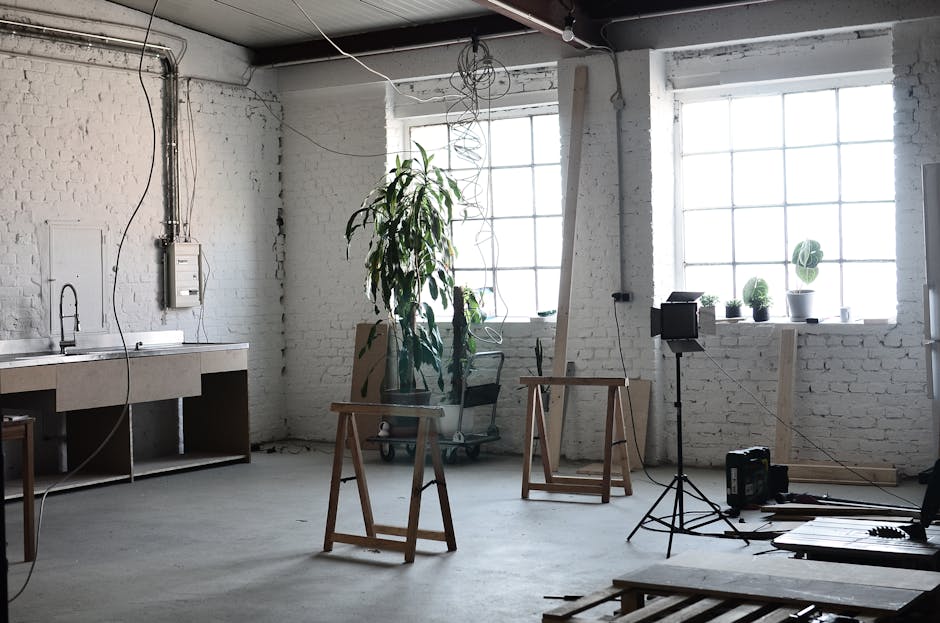Top Tools for UX/UI Designers
You’re on a mission to level up your UX/UI design skills, and you know that the right tools can make all the difference. From wireframing and prototyping essentials like Figma and InVision, to design systems and style guides that guaranty consistency, you’ve got a lot of ground to cover. But that’s not all – you’ll also need to master user testing and feedback tools, collaboration and project management, designing for accessibility and inclusion, and advanced prototyping and animation. Buckle up, because we’re about to plunge into the ultimate toolbox for UX/UI designers – and it’s about to get real.
Key Takeaways
• Digital sketching tools like Figma and Adobe XD help UX/UI designers quickly iterate on layouts and refine their vision.• Interactive storyboarding tools like InVision and Principle craft immersive experiences that are both intuitive and engaging.• Wireframing and prototyping tools like Figma, Adobe XD, and InVision facilitate rapid experimentation and iterative design refinement.• Design systems and accessibility-focussed tools like Storybook, Bit, and Zeplin ensure design consistency, cohesion, and inclusivity.• Real-time collaboration tools like Figma, Adobe XD, and InVision enable seamless feedback, input, and task assignment for efficient design handoff.
Wireframing and Prototyping Essentials

You’re about to plunge into the messy, iterative world of wireframing and prototyping, where your brilliant ideas will get torn apart and rebuilt into something even better. Buckle up, because it’s about to get real.
In this chaotic yet beautiful process, you’ll transform your vague notions into tangible, clickable, and loveable digital products.
Digital Sketching is your new BFF here. It’s the fastest way to get your ideas down, iterating on layouts, and refining your vision. Don’t worry about perfection; it’s all about rapid experimentation.
You’ll be surprised how much you can achieve with a few swift strokes and some well-placed rectangles.
Interactive Storyboarding takes it to the next level. You’ll weave your wireframes together, crafting an immersive experience that’s both intuitive and engaging.
This is where your users’ journeys come alive, and you get to test-drive your ideas before investing in development. It’s like a dress rehearsal for your product, minus the awkward small talk and overpriced coffee.
In this wild ride, you’ll encounter setbacks, U-turns, and eureka moments. But hey, that’s what makes wireframing and prototyping so darn exciting!
Design Systems and Style Guides

Now that the phrenetic energy of wireframing and prototyping has subsided, it’s time to reign in the chaos with a design system that’s the ultimate referee, keeping your brand’s visual identity in cheque and maintaining consistency across all touchpoints.
Think of it as the design equivalent of a strict but loving parent, making sure all your design elements are in line and on-brand.
A design system is a collection of reusable components, guidelines, and assets that guaranty design consistency across all your products and platforms.
It’s the secret to creating a cohesive brand identity that resonates with your users.
With a solid design system in place, you can say goodby to those pesky inconsistencies that can dilute your brand’s message.
A style guide is an integral part of your design system, outlining the rules and guidelines for using your brand’s visual identity elements, from typography to colour palette.
It’s the go-to resource for your entire team, confirming that everyone is on the same page when it comes to your brand’s visual language.
By establishing a robust design system and style guide, you’ll save time, reduce confusion, and create a seamless user experience that reenforces your brand’s identity.
User Testing and Feedback Tools

Gathering feedback from real users is like holding up a mirror to your design’s face – it’s about to get real, and you mightn’t like what you see. But, let’s be real, it’s necessary. You’ve created these beautiful user personas, and now it’s time to see if they actually behave like you imagined.
User testing and feedback tools are essential in the UX/UI design process. Tools like UserTesting, TryMyUI, and What Users Do help you gather feedback from real users, giving you insight into how they interact with your design. You’ll get to see firsthand what confuses or frustrates them, and what makes them happy.
This feedback loop is vital in refining your design and ensuring it meets the needs of your users. You might think you know your users, but trust us, you don’t. Not until you’ve seen them struggle to find the ‘submit’ button or watch them misunderstand your clever navigation system.
These tools help you identify the gaps between your design and your users’ expectations. By closing these gaps, you’ll create a seamless user experience that keeps them coming back for more. So, be brave, gather that feedback, and be willing to make changes. Your users (and your design) will thank you.
Collaboration and Project Management

You’re probably tyred of dealing with design projects that are as scattered as your team’s attention span.
That’s why you need tools that’ll get everyone on the same page – literally.
Let’s talk about the game-changers: real-time collaboration tools that make design handoff a breeze and task assignment a no-brainer.
Real-time Collaboration Tools
When it comes to bringing your design vision to life, seamless real-time collaboration tools are the unsung heroes that save your sanity and streamline the entire design process.
You know, the ones that prevent endless email threads, missed messages, and those dreaded ‘who-changed-what-when’ debates. Real-time collaboration tools are the game-changers that turn design partnerships into powerhouses.
They’re the virtual workspaces where your team can converge, create, and iterate in perfect harmony.
With these tools, you can finally bid farewell to version control nightmares and hello to simultaneous feedback and input.
It’s like having your entire team in one virtual room, working together in perfect synch. You can track changes, comment, and resolve design disputes in real-time – no more waiting for hours (or days) for feedback.
The result? Faster design cycles, reduced misunderstandings, and a whole lot less stress.
Design Handoff Made Easy
Design handoff – the moment of truth where your beautiful design files get passed off to the development team, and you’re left praying they don’t ‘accidentally’ turn your masterpiece into a hot mess.
You’ve poured your heart and soul into crafting a design that’s both aesthetically pleasing and user-friendly, only to risk it being butchered during the handoff process.
But fear not, dear designer! With the right tools, you can facilitate a seamless integration of your design vision into the development process.
This is where design handoff tools come in – to bridge the gap between design and development, and prevent the dreaded Design Debt.
You know, that pesky phenomenon where your beautiful design gets lost in translation, and you’re left dealing with the consequences.
Task Assignment Simplified
Assigning tasks is like playing a game of telephone – except instead of words, you’re relaying complex design requirements, and the stakes are much higher than a simple miscommunication. You know the drill: a designer receives a task, interprets it, and then passes it on to the next team member. But what if that message gets lost in translation? Suddenly, your project is derailed by miscommunication and misunderstandings.
That’s where task assignment tools come in – to simplify the process and ensure everyone’s on the same page. Here are some top tools to consider:
| Tool | Features | Benefits |
|---|---|---|
| Asana | Task assignment, time blocking | Streamlined workflows, increased productivity |
| Trello | Priority matrices, customisable boards | Visual project management, team collaboration |
| ClickUp | Task automation, Gantt charts | Efficient task management, enhanced visualisation |
| Wrike | Resource allocation, real-time reporting | Data-driven decision making, improved project control |
Designing for Accessibility and Inclusion

How can you honestly claim to be a user-centric designer if you’re not actively working to make your creations accessible to everyone, regardless of their abilities? It’s time to take a hard look at your design process and verify that you’re not inadvertently excluding users with disabilities.
When it comes to designing for accessibility and inclusion, it’s the little things that count. For instance, have you considered the colour contrast of your design? Can users with visual impairments easily distinguish between different elements on the page? Don’t assume that your design looks good to everyone just because it looks good to you.
Use tools to test your colour contrast and make adjustments accordingly.
Inclusive ikons are another vital aspect of accessible design. Avoid using ikons that are overly complex or rely on colour to convey meaning. Instead, opt for simple, high-contrast ikons that can be easily understood by users with cognitive or visual impairments.
And don’t even get me started on alt text – make sure you’re providing meaningful descriptions for all your images, so users with screen readers can understand what’s going on.
Advanced Prototyping and Animation

You’re about to take your prototyping game to the next level by incorporating animations that don’t make users want to scream in frustration. Gone are the days of clunky segues and awkward loading screens. With advanced prototyping and animation tools, you can create seamless micro interactions that elevate the user experience.
Figma | Advanced animation features, micro-interactions, and motion design | Free-$12/month |Adobe XD | Prototyping, animation, and collaboration features | $9.99-$31.49/month |InVision | Advanced animation and prototyping features, design systems | Free-$25/month |Principle | Advanced animation and motion design features | $99 (one-time payment) |Haiku | Advanced animation and motion design features, collaboration | $9-$49/month |
When it comes to advanced prototyping and animation, it’s all about creating a seamless user experience. With these tools, you can create micro interactions that delight users, and motion design that tells a story. Remember, the goal is to create an experience that’s intuitive, engaging, and frustration-free. So, which tool will you choose to take your prototyping game to the next level?
Design Handoff and Development Tools

Now that you’ve perfected the art of prototyping and animation, it’s time to get your design into the hands of developers who’ll actually bring it to life.
You’ve done your part; now it’s time to hand over the reins. This is where design handoff and development tools come in – to facilitate a smooth shift from design to development.
You know the drill: you spend hours crafting a beautiful design, only to have it lost in translation when it reaches the dev team.
That’s why you need tools that facilitate collaboration and streamline the design-to-dev process. Tools like Zeplin, Storybook, and Bit help you generate code snippets, style guides, and component libraries that devs can actually use.
Imagine being able to conduct code reviews and provide feedback on dev workflows without having to learn how to code yourself (because let’s be real, you’re a designer, not a developer).
These tools make it possible, allowing you to focus on what you do best: designing amazing user experiences.
Conclusion
You’ve made it to the finish line, equipped with the ultimate toolkit for UX/UI designers.
Now, go forth and design like a rockstar! With these top tools, you’ll be crafting experiences that’ll leave users singing your praises.
Don’t just design for the sake of design – use these essentials to create something that truly resonates.
Remember, good design is like a good joke – it’s all about the delivery.
Contact us to discuss our services now!


